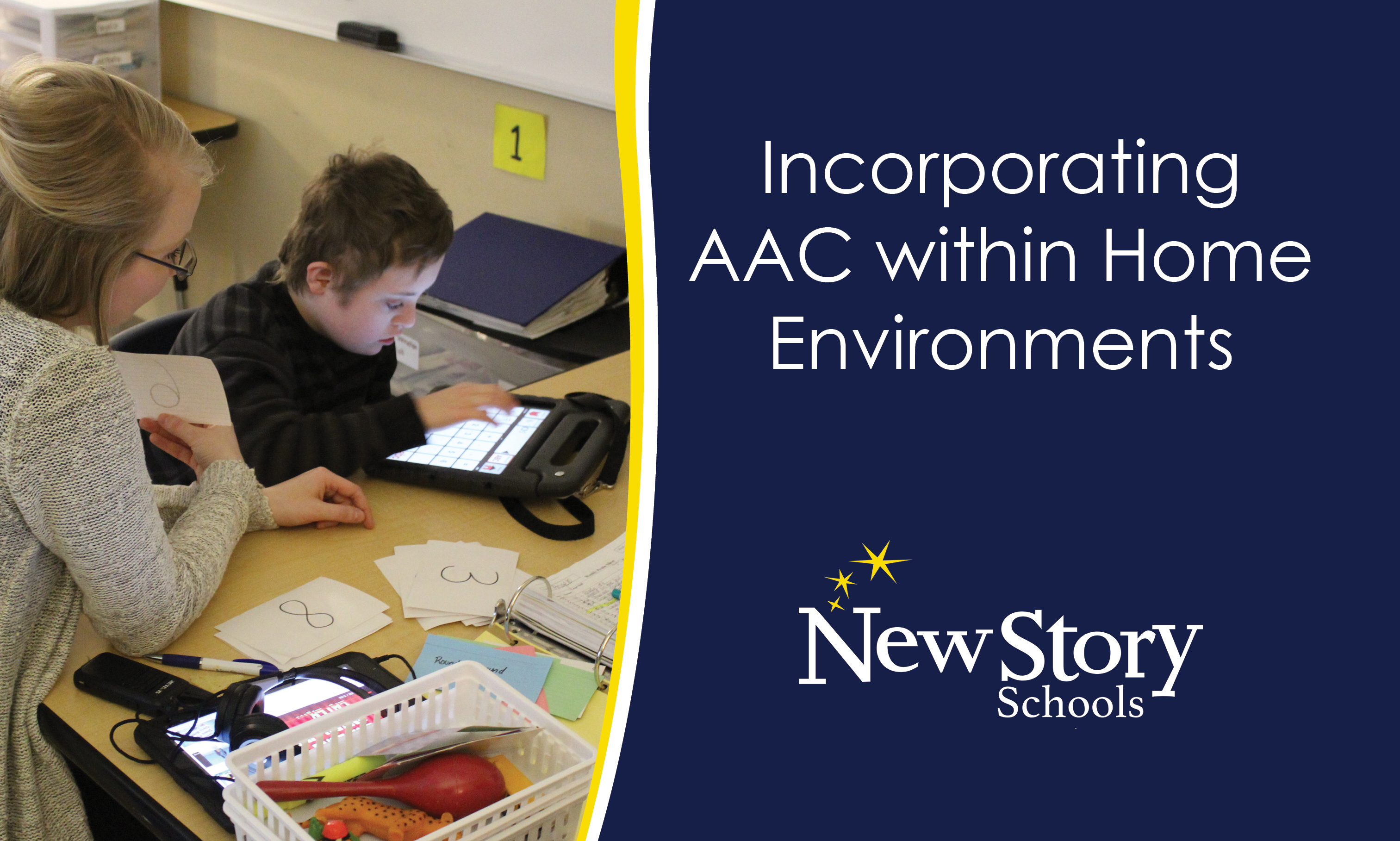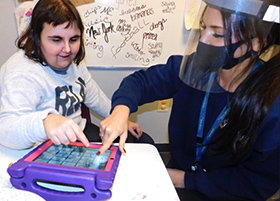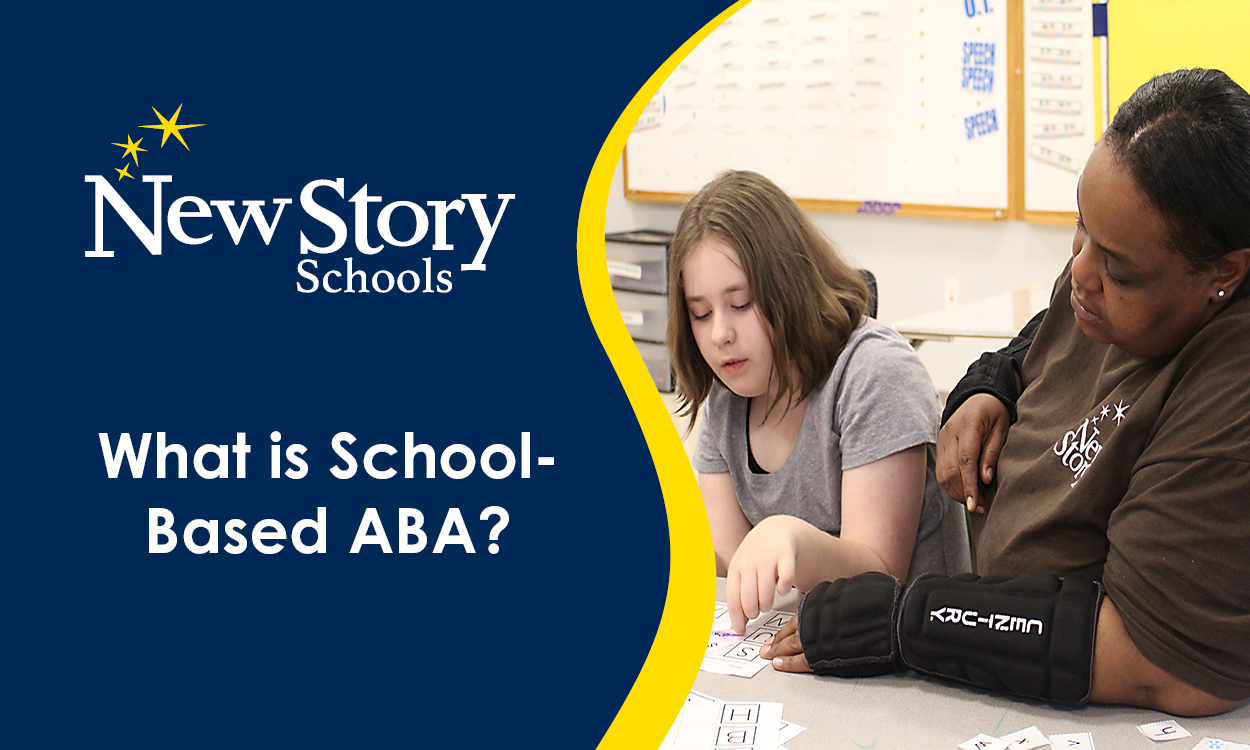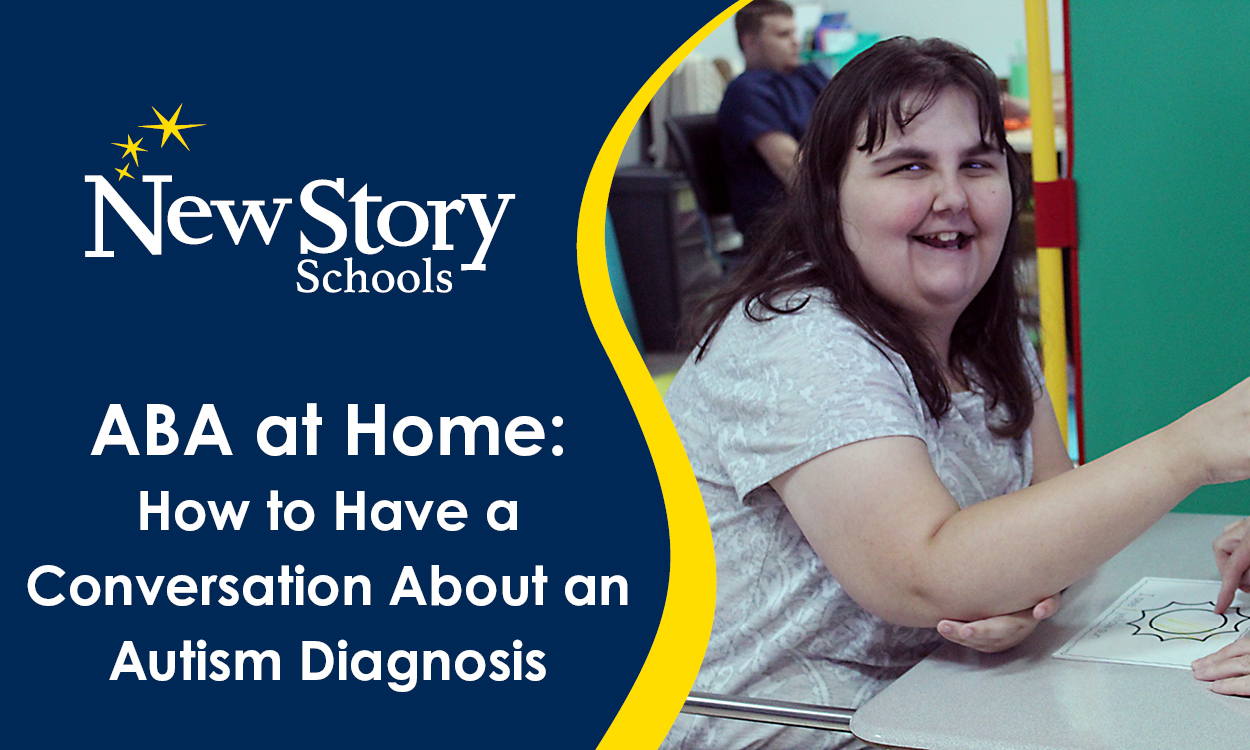Using AAC Devices at Home
Posted: January 11, 2021 | Written By: Abriel McCann, MS, CCC-SLP | Category: At Home Help

If you are a parent of a child who has difficulty using verbal speech to communicate, you might want to learn more about Augmentative and Alternative Communication (AAC).
This approach assists in providing students with expression through a variety of unaided and aided methods. With the intervention of a speech-language pathologist, multidisciplinary team members, and parents/caregivers, students can thrive with AAC in both school and home environments.

What are unaided and aided AAC methods?
Unaided communication is produced with only your body and could be as simple as facial expressions or body language, including sign language.
Aided communication requires extra physical materials or a device. This could be as simple as using a pen and paper to write or pointing to letters and/or pictures on a board, or as sophisticated as more advanced picture communication systems and speech-generating devices.
Students may use multiple unaided and aided AAC methods to communicate. To ensure functional communication and progress, the goal is for students to carry over AAC skills between school and home.
How can I facilitate ACC use at home?
Work with your child's multidisciplinary team to answer these questions:
- What communication methods does your child use most frequently?
- What are your child's speech and language goals?
- What prompts/models help your child best when he/she is having difficulty communicating?
- What activities does your child enjoy in school and how can communication be used during those activities?
It is helpful for your child's multidisciplinary team to have consistent awareness of your child's communication at home as they work with your child in school.
Prompting and modeling
While direct instruction teaches our children new concepts, they are also constantly learning from watching our behavior.
Is your child using unaided communication? Try modeling body language and facial expressions when communicating. If using sign language, which signs is your child learning and when do you use those signs in your daily routine? For example, if your child is learning the sign "eat", you might want to model the sign "eat" each time your child has a meal and/or snack and encourage them to do the same. It might be helpful to have flashcards or a website/app (i.e. The ASL APP, SpreadTheSign) to view signs as needed.
Is your child using aided communication? Try to ensure that your child's AAC system is always available. You can model use of the system throughout your daily activities, and encourage your child to do the same. Start with a few activities and continually increase the instances in which you are modeling use of the communication aids. For example, if brushing your teeth, you may assist your child in selecting "toothbrush" if he/she is using one word to communicate. You might then want to model 2-3 words (e.g. toothbrush and toothpaste, brush teeth, green toothbrush) during the activity to expand language. When selecting words to model, choose function words that give the utterance meaning.
Natural and preferred activities
What occurs most naturally in your daily schedule? These activities could be as routine as eating, getting ready to go to sleep, or washing your hands. If AAC is consistently added to a daily activity, it will become natural for your child to independently use AAC during that activity.
What does your child enjoy doing? Preferred activities are a great time to incorporate AAC use because they are very motivating. For example, does your child love to read? You may communicate "read", "read book", "like book", etc. using your child's AAC method, depending upon his/her vocabulary level. You may even name, describe, ask/answer questions within the activity, if that is within your child's vocabulary.
Reinforce
While a child seeing the outcomes of their communication, like getting a preferred item when they name it, verbal encouragement is also a great reinforcement. Ensure reinforcement is specific to what your child is targeting (e.g. "wow nice job asking for a break" as opposed to "nice job") to allow your student to know exactly what he/she did well. We want them to know how proud we are! An enthusiastic, consistent team approach can allow for many fun and natural opportunities for your child to progress AAC use!
Want to be notified of new articles and resources from New Story Schools? Submit your email and opt into our newsletter!









